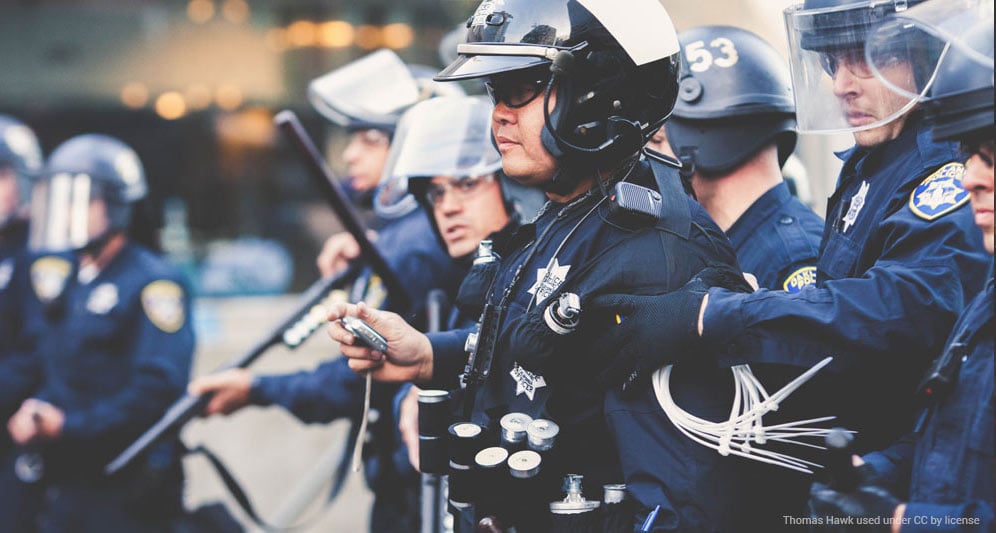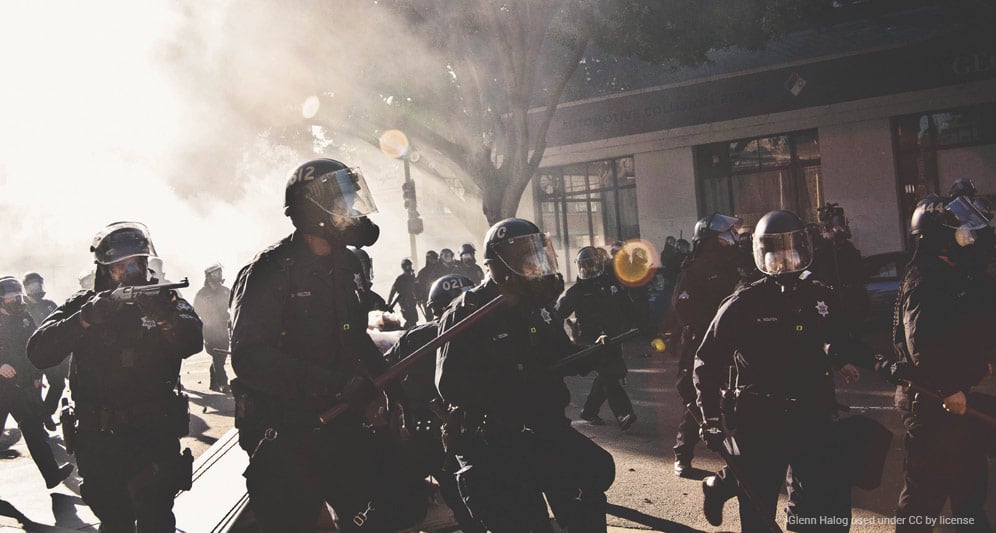As police across the U.S. seek to improve accountability and reduce the use of lethal force, the National Consensus Policy on Use of Force provides some helpful recommendations.
The National Consensus Policy can be a great reference point for reviewing your agency’s use of force policies.
However, keep in mind that model policy isn’t made to be adopted word-for-word by every police agency.
Use-of-force is a complex and nuanced issue. While model policies can be helpful, there’s no one-size-fits-all approach to police use-of-force.

Every agency’s use-of-force policy should include guidelines on training and different levels of force. But the exact policy and restrictions may differ depending on the needs of the department.
As you look over the National Consensus Policy, you should evaluate what’s right for your department.
Here are some ways your department can work to implement the recommendations and enhance your use-of-force policy.
Gather a policy review committee or group
First, gather a group to examine your existing use-of-force policy.
Your policy review committee should include members from every level of your organization – from line officers to command staff. This will help you make sure your policy is practical and addresses the concerns of those who will be implementing the guidelines.
You may also wish to include legal counsel, members of your community, or use-of-force experts.
The ultimate goal of police use-of-force policy revision is to balance officer safety and civilian rights. Consulting legal experts will help you figure out how to protect everyone involved.
One you’ve gathered your policy review committee, compare your existing use-of-force policy with the National Consensus Policy on Use of Force.
Determine if there are areas of your policy that need revising. Some questions you may consider:
- Does your policy clearly define all terms?
- Does your policy address de-escalation, less-lethal force, and deadly force?
- Will your department allow officers to fire warning shots or fire at moving vehicles?
- When can officers use specific tactics, such as choke holds?
- What provisions does your policy provide for training?
Talk through how to adapt the policy recommendations in ways that work for your department. Try to be as thorough as possible.
Be sure to document the process so you can go back and evaluate why you made the decisions.
Keeping these records will help you when you update your use-of-force policy again in the future.
Using a policy management system like PowerDMS can help you keep track of updates and automatically archive old versions so you can track how your policy changes over time.
Alert officers of any changes
Once you have adapted and incorporated the recommendations from the National Consensus Policy on Use of Force into your own use-of-force policy, you must update your officers.
Use-of-force is consistently one of the highest-risk areas of police work, so it’s essential that officers know the current policy and procedures.
As soon as you finalize the updates to your department’s use-of-force policy, send it out to every officer in your department. Clearly establish what parts of the policy changed and what stayed the same.
A policy management tool such as PowerDMS can help you distribute updates with just the click of a button. It can also let you highlight changes and track signatures to ensure that every officer sees policy changes.
If you’ve made major changes to your use-of-force policy, you may want to explain the reasons behind the changes.
Clear communication about changes can help you get buy-in from your officers and ensure that policy changes quickly move from principle to practice.
Train your officers
Of course, any changes to your use-of-force policy will mean changes to your training protocol. Make sure to update any relevant training materials to reflect policy changes.
The National Consensus Policy on Use of Force recommends that law enforcement departments provide use-of-force training at least annually.
Training should include a mixture of classroom and scenario-based training on each option on the use-of-force continuum.

Your department’s use-of-force training should provide officers with opportunities to practice deciding when and how to use force in realistic scenarios.
The National Consensus Policy recommends that training include:
- Techniques for de-escalation
- Simulated shooting scenarios
- Less-lethal force scenarios
- Deadly force scenarios
Move Quickly
With so many leading law enforcement associations on board with the National Consensus Policy on Use of Force, your department should take notice.
Your agency may not adopt all of the recommendations, but the model policy can be a helpful tool for reviewing and improving your department’s use-of-force policy.
The National Consensus Policy provides a good opportunity to reassess how your department handles policy and training for police use-of-force.
Don’t wait for an incident to prompt you to update your policy. Be proactive by taking time to look at how the Consensus Policy may impact your department’s policy.



